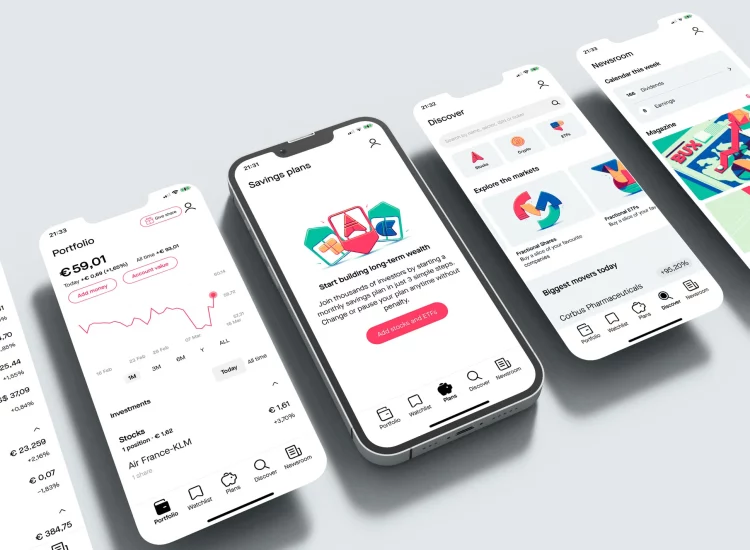The financial world is on the brink of a seismic transformation. After a relatively smooth transition to T+1 settlement in 2024, global exchanges and regulators are now preparing for an even more radical evolution: T+0 settlement. That is, trades that settle the same day they are executed. While proponents argue that it will usher in a new era of efficiency, transparency, and risk reduction, critics point to an undercurrent of structural vulnerabilities, hidden operational bottlenecks, and liquidity challenges. For investors, especially retail traders, the question looms large: should the upcoming T+0 revolution inspire confidence—or caution? From brokerage infrastructure readiness to the nuances of fractional share management, and the unexpected effects on trading performance, the shift to real-time settlement is far more than a technological upgrade. It’s a redefinition of market behavior.
Interactive Brokers vs. Robinhood Liquidity Preparedness
The first and perhaps most visible line of differentiation in the transition to T+0 lies in how well brokers are capitalized and technologically equipped to handle real-time fund and collateral movement. Interactive Brokers (IBKR) and Robinhood represent two vastly different philosophies and architectures in this space. IBKR, known for its robust in-house clearing systems, real-time margin analytics, and historically conservative capital buffers, is arguably better positioned for the T+0 era. It already operates on a quasi-instant settlement basis for institutional clients, providing immediate trade confirmation and near-instantaneous margin calls. With the firm’s tightly integrated back-office systems and proprietary risk modeling tools, IBKR has built the settlement rails necessary to handle the shift without putting client liquidity at risk.
Robinhood, in contrast, has historically depended on delayed settlement windows and payment for order flow (PFOF) to support its zero-commission model. While this model has democratized access to trading, it has also made the platform heavily reliant on clearing partners and delayed liquidity cycles. Under a T+0 framework, where brokers must settle trades within hours or even minutes, this model faces considerable stress. Without an overhaul of its clearing infrastructure, Robinhood could face a liquidity mismatch between trade execution and fund availability. The company’s recent forays into building out a more integrated clearing arm and expanding its instant deposit services show awareness of this pressure, but whether it can fully meet the demands of real-time settlement by 2026 remains to be seen.
Moreover, regulatory scrutiny may amplify this divergence. T+0 will likely expose any mismatches in float management and create tighter capital requirements for brokers with lower operational transparency. Investors using platforms that fail to evolve may face trading limits during high-volume days or even delayed access to funds, undermining the very promise of frictionless markets.
Backtesting Results of Instant Settlement on Day Trading Returns
Beyond infrastructure and risk, one of the least discussed—yet most important—questions for active traders is: how does T+0 affect actual trading performance? To answer this, analysts and quantitative research desks have begun running extensive backtests on hypothetical T+0 environments using historical trade data.
The early results are mixed. On the one hand, the ability to recycle capital multiple times a day due to faster settlement cycles has shown a modest increase in gross return potential for highly skilled intraday traders. These traders benefit from the ability to re-deploy proceeds from winning trades into new positions without waiting for T+1 liquidity release. This effect, known as “capital efficiency lift,” is most pronounced in strategies that focus on short-duration technical signals, mean-reversion, or momentum scalping.
However, for the average retail trader or algorithmic strategy with low edge, the benefit is largely neutral or even negative. The reason? T+0 introduces a stricter time constraint on capital deployment and trade settlement accuracy. Traders now have far less margin for clerical errors, execution mistakes, or delayed data. This operational rigidity has the unintended effect of penalizing lower-efficiency strategies and exposing them to slippage, margin calls, or missed re-entry opportunities.
Furthermore, intraday volatility appears to increase slightly in T+0 simulations due to the compression of settlement risk into shorter timeframes. This can lead to sharper liquidity gaps and more frequent price jumps during earnings reports, macro data releases, or large order blocks—conditions that can trap unsuspecting day traders in positions they cannot unwind without penalty.
The takeaway from backtesting is clear: T+0 may offer modest alpha to elite traders with real-time infrastructure, but it raises the barrier to entry for casual retail participants, increasing the penalty for operational or strategic errors.

Hidden Risks in Fractional Share Accounting
Fractional shares have become a hallmark of the modern brokerage experience, especially among millennial and Gen Z investors. Platforms like Robinhood, Fidelity, and Cash App allow users to buy as little as $1 of a stock, regardless of its share price. While this democratizes investing, it also introduces hidden complexity in a T+0 world.
Under a T+2 or even T+1 regime, brokerages had sufficient time to aggregate fractional share orders, route them to wholesale or market makers, and reconcile settlement differences internally. But in T+0, the window for this internal “netting” shrinks dramatically. As trades must be settled same-day, fractional share purchases—which often cannot be executed directly on exchanges—require more precise inventory management and cash reconciliation.
This opens up multiple risks. First, there’s the mismatch risk, where the brokerage may not have sufficient full-share inventory to fulfill aggregated fractional orders, forcing it to delay settlement or use proprietary liquidity—thereby increasing internal cost or exposing itself to market risk. Second, regulatory risk emerges as same-day settlement rules push brokers into more aggressive pre-funding models, which can strain cash management and increase the likelihood of trade failures or client dissatisfaction.
There is also the issue of dividend attribution and corporate actions. Under T+0, processing dividends, stock splits, or merger adjustments on fractional shares becomes exponentially more difficult to handle in real-time. This could result in temporary misallocations or discrepancies in investor accounts, eroding trust in platforms that can’t adapt quickly enough.
Finally, if real-time settlement leads to more trading velocity—especially in low-priced stocks—it may also lead to more “ghost shares” where fractional ownership exceeds actual float temporarily due to asynchronous reconciliation. While rare, this phenomenon has already shown up in extreme volume periods, and T+0 would only heighten its risk.
Conclusion
The T+0 settlement revolution is a double-edged sword. On one hand, it signals an exciting leap forward in capital markets infrastructure, promising efficiency gains, reduced counterparty risk, and a more modern trading experience. On the other, it magnifies the operational fragility of broker-dealers, increases the cognitive and logistical load on traders, and introduces hidden landmines in areas like fractional share accounting.
For sophisticated investors and institutional players with robust systems and capital buffers, T+0 may become a competitive advantage. But for retail traders, especially those using mobile-first platforms or relying on high-turnover strategies, the transition may introduce more friction than freedom. The question isn’t whether T+0 will arrive—it’s already coming. The question is who will be ready when it does.
Understanding broker preparedness, the real impact on trade outcomes, and the backend mechanics of fractional asset processing will be key to navigating this revolution. As with any structural market change, those who anticipate the downstream effects stand to gain—while those who ignore the complexity risk being blindsided.














































